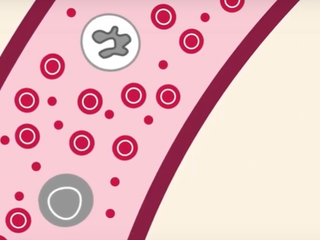Myelodysplastic syndromes (MDS) explained
MDS is a type of blood cancer. MDS stands for myelodysplastic syndromes, which are a group of conditions where the bone marrow does not work properly and makes faulty blood cells.
Bone marrow
Bone marrow is a spongy tissue found inside some of our bones. It's where the body makes blood cells.
MDS is sometimes called bone marrow failure. This is because when you have MDS, your bone marrow does not make blood cells in the normal way.
You might also hear MDS called myelodysplasia. Myelo means bone marrow and dysplasia means abnormal cells.
"The doctor explained what MDS was, but I was too shocked to take it in. I found reading about it, and contacting charities like Blood Cancer UK, helped me understand the diagnosis."
Tony, living with MDS since 2020.

Blood cells and MDS
All blood cells start from special cells in the bone marrow called stem cells. In healthy bone marrow, the stem cells develop into immature cells called blasts, before turning into mature blood cells. The three main types of mature blood cell are:
- red blood cells that carry oxygen around the body
- white blood cells that fight infections
- platelets that prevent bleeding.
The diagram below shows how blood cells develop. There are two types of blood stem cell called:
- lymphoid stem cells
- myeloid stem cells.
MDS affects myeloid stem cells and the cells that develop from them.

How stem cells develop into blood cells.
How MDS affects blood cells
If everything’s working normally, your bone marrow makes healthy blood cells, and the right number of each type gets released into your bloodstream. But in people with MDS, this process has gone wrong.
If you have MDS, some of your myeloid stem cells do not develop properly into healthy blood cells. Instead, they stay at the immature blast stage or develop into abnormal blood cells that don’t work in the way they should. The result is that the number of one or more types of healthy blood cell in your blood is reduced.
The symptoms you have with MDS depend on which type of blood cells you have low levels of.

What is blood cancer?
Find out how blood cancer starts and how it can affect your body and your life.
